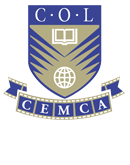
NSOU OER Repository

NETAJI SUBHAS OPEN UNIVERSITY
The Premier State Open University In India


NSOU OER Repository

NETAJI SUBHAS OPEN UNIVERSITY
The Premier State Open University In India

Netaji Subhas Open University is the premier State Open University in India. The year 1997 was the birth centenary year of Netaji Subhas Chandra Bose. The Chief Minister of West Bengal made an announcement at a State function that an Open University would be set up soon and dedicated to Netaji's hallowed memory. The Higher Education Minister, Govt. of West Bengal spearheaded the idea after his visit to the Open University in U.K.Under his instruction was set up a ten-member steering committee headed by late Dr. Bhaskar Ray Chowdhury, former Vice-Chancellor of Kolkata University.
Following this, a State Act (W.B. Act (XIX) of 1997 and Recognised by U.G.C.) was passed on the 20th August 1997 in favour of opening a University for imparting Distance Education. Netaji Subhas Open University was established by bifurcated Netaji Institute of Asian Studies (NIAS) and in terms of the Act of West Bengal State Legislative Assembly and is housed in Historic building of Sri Sarat Chandra Bose, elder brother of Netaji. The University started functioning with effect from July 1998 Semester, only with the Bachelor's Degree Programme in Arts & Commerce to provide an opportunity of higher education in the vernacular medium to various disadvantaged groups of aspiring learners. It is the tenth Open University of the country and the ninth State Open University.
Commonwealth Educational Media Centre for Asia
In response to needs expressed by the Commonwealth countries of the Asian region for a more effective utilization of educational media resources for Distance Education, the Commonwealth of Learning (COL) established Commonwealth Educational Media Centre for Asia
(CEMCA) in the year 1994. CEMCA, under a host country agreement signed between COL and Government of India (GoI) in 1998, has it’s headquarter in New Delhi. The GoI notified CEMCA as a diplomatic mission under section 3 of the United Nations (privileges and immunities) Act, 1947 (46 of 1947) vide The Gazette of India, Extraordinary, Part II, Section 3, Sub-section (ii) dated 10 February 2000.
Vision:To be the foremost agency in Commonwealth Asia that promotes media enabled learning for development.
Mission:To assist governments and institutions to expand the scale, efficiency and quality of learning by using multiple media in open, distance and technology-enhanced learning.
Objectives & Strategies
The strategic objective of CEMCA is to promote co-operation and collaboration in the use of electronic media resources for distance education. The specific objectives are to:
Serve as a regional electronic media resource centre.
Facilitate an effective exchange of information on educational media resources between educational and media organisations in the region.
Promote greater use of electronic media in the delivery of distance education programmes.
Promote linkages between CEMCA and other organisations to enhance the availability of educational media resources region-wide
Facilitate access to training in the development and use of electronic media resources for distance education.
Serve as an information centre on educational technology.
Strategies
COL/CEMCA has identified five core strategies to achieve outcomes and impact: partnerships, capacity, materials, models and policy. In practice, most COL/CEMCA activities incorporate more than one of these strategies and, in some cases, all five.
Partnership
Partnership refers to a dynamic relationship between organisations and institutions based on mutually agreed goals with clearly defined roles and responsibilities. CEMCA/COL partners with government agencies, public institutions, civil society and other organisations to improve and extend teaching and learning services to people in the developing Commonwealth. Partnerships are based on collaboration and shared values and goals.
Capacity
Capacity development refers to processes that enable people and organisations to achieve their objectives more effectively. This can mean training but also networking and other processes that enable and empower people and organisations to develop appropriate policies, adopt and adapt models, and develop and use materials. In short, capacity development pervades all CEMCA activities. It focuses primarily on human resource development.
Materials
By materials, COL/CEMCA means learning and teaching resources. These can be course materials, toolkits and frameworks for quality or policy-making. Course materials, and often also the toolkits and frameworks, are produced by partners with COL/CEMCA support. CEMCA publishes all its new learning resources as Open Educational Resources (OER).
Models
A model is a coherent set of structures and processes that has been shown to work in more than one context to achieve specific results. CEMCA is working to develop sustainable models for Community Radio Stations, and also develop new models of delivery of Open Schooling. In the past it has developed the model guidelines for Quality Assurance of Multimedia Learning Materials.
Policies
A policy is a high-level statement of ambition that specifies the outcomes to be achieved and that guides decision-making through a defined course of action. COL/CEMCA supports the development of policy for organisations and institutions as well as for governments. Promoting the use of Open Distance and technology-enabled learning, and use of Open Educational Resources require policy development at national and institutional level, and CEMCA/COL supports such initiative through capacity building and advocacy.
NSOU-OER is an Open platform to access open educational resources having open license to Reuse, Revise, Remix, Retain and Redistribute (5Rs). Netaji Subhas open University in support with Commonwealth Educational Media Centre for Asia initiated this work to ensure inclusive and equitable quality education opportunities by repurposing high quality open educational resources (OER) to facilitate innovative, interactive and collaborative learning environment where learner's set their own objectives rather than being restricted by institutions. Netaji Subhas Open University foster flexible learning environment by using Self Learning Materials, Lecture Notes, Audio/video Lectures, Assignments, Course materials etc by both course of action, i.e., face-to-face mode and distance mode. Through this insitutional OER repository university is going to gear up its basic educational facilities supported with information and communication technologies.